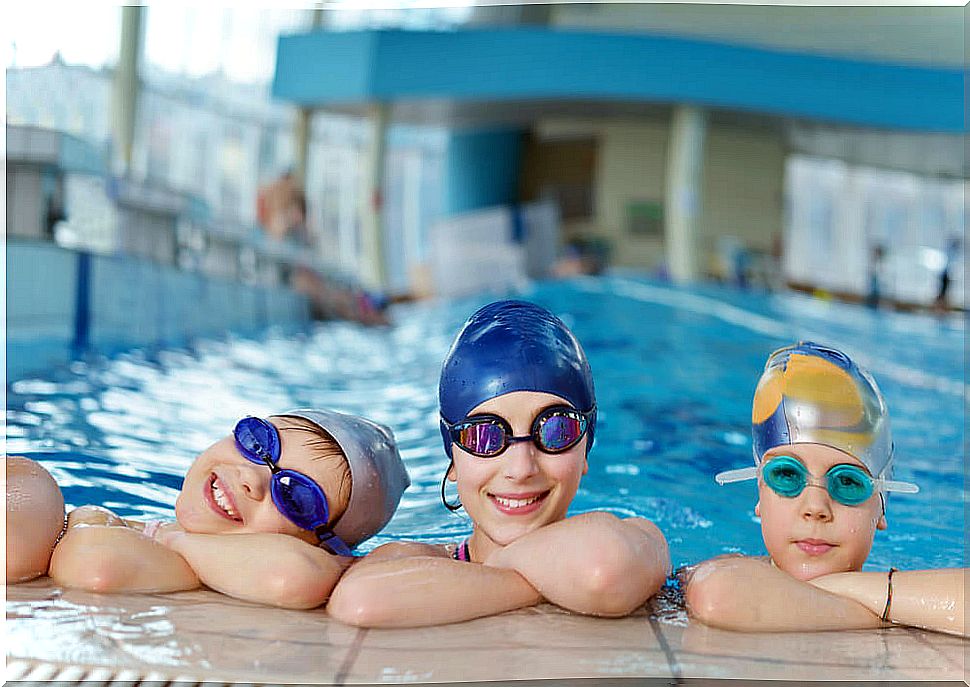Muscle Strengthening In Children: Everything You Need To Know
Muscle strengthening in children helps build fibers and strength through the use of weights, resistance bands, bodyweight exercises, or machines. But is it good for infants?
In fact, it is feasible for children to perform strength and muscle strengthening exercises, as long as certain guidelines adapted to the pediatric age and their physical and health condition are observed.
Muscle strengthening exercises in childhood
Before continuing it is important to make a clarification. As the Mayo Clinic team recalls, strength training should not be confused with weight lifting or bodybuilding.
In fact, trying to build large muscles can put too much pressure on young tissues, tendons, and areas of cartilage that have not yet been converted to bone. With this in mind, it is best for children to use light resistance, placing special emphasis on technique for safe and controlled movement.
The Centers for Disease Control and Prevention (CDC) recommend that children and adolescents get at least 60 minutes of physical activity every day, including aerobic exercise, as well as those that build muscle and strengthen bones.
Along these lines, children are recommended to engage in aerobic physical activity of moderate or vigorous intensity every day of the week, as well as exercises to strengthen the skeleton at least 3 days a week.

Importance of this modality in children
Why is it important for children to do muscle strengthening exercises? The main reason is that strength and endurance are essential for children to be able to perform everyday functions, such as fine and gross motor skills.
In addition, strong muscles help maintain proper posture throughout the day. This is key, considering that children spend many hours sitting in non-ergonomic chairs and many of them still have to carry or drag heavy backpacks.
On the other hand, improving strength and endurance contributes to a high metabolism. This increases caloric expenditure, both during physical activities and at rest, which reduces the risk of obesity.
It’s also worth noting that children with strong muscles often have strong ligaments and tendons as well. Good joint health prevents the risk of injury, not only during sports activities, but also in daily life.
Lastly, it is important to note that muscle strength is necessary for general activities and helps reduce weakness and fatigue. Strengthening activities require children to work against a stronger form of resistance.
Combining diverse and varied muscle-strengthening activities will help children develop different fiber groups.
Benefits of muscle strengthening in children
Taking into account the above, we can say that the most important benefits of muscle strengthening exercises for children, provided they are done correctly, are the following:
- Increased strength and muscular endurance of the child.
- Increased protection of muscles and joints against injuries of all kinds, especially if high-risk sports are performed.
- Performance improvement in almost any sport.
- Development of proper habits of movement and posture that can be applied in all aspects of life.
- Strengthening of the bones.
- Improved body composition, strength, aerobic capacity and anaerobic capacity.
- Healthy levels of blood pressure, cholesterol and blood glucose.
- Maintaining a healthy weight.
- Benefits for mental health, self-esteem and self-confidence.
Games and activities for children in which muscle strengthening is performed

The best muscle-strengthening activities for kids are as follows:
- Tug of war games.
- Resistance exercises with body weight or resistance bands.
- Climbing trees or ropes.
- Climbing.
- Some forms of yoga.
Other variations of games and physical activities that promote muscle development include circuits and obstacle courses that include varied exercises, moving objects and throwing, as well as swimming. The latter is a whole-body activity that builds strength and endurance.
Supervised training for good results
Strength training should be part of a total fitness program. We must not lose sight of the fact that, as an article published in Sports Health magazine , this type of exercise, when performed in a controlled and supervised environment, can help children and adolescents of all athletic abilities to improve safely your general well-being.









